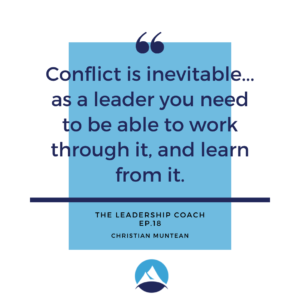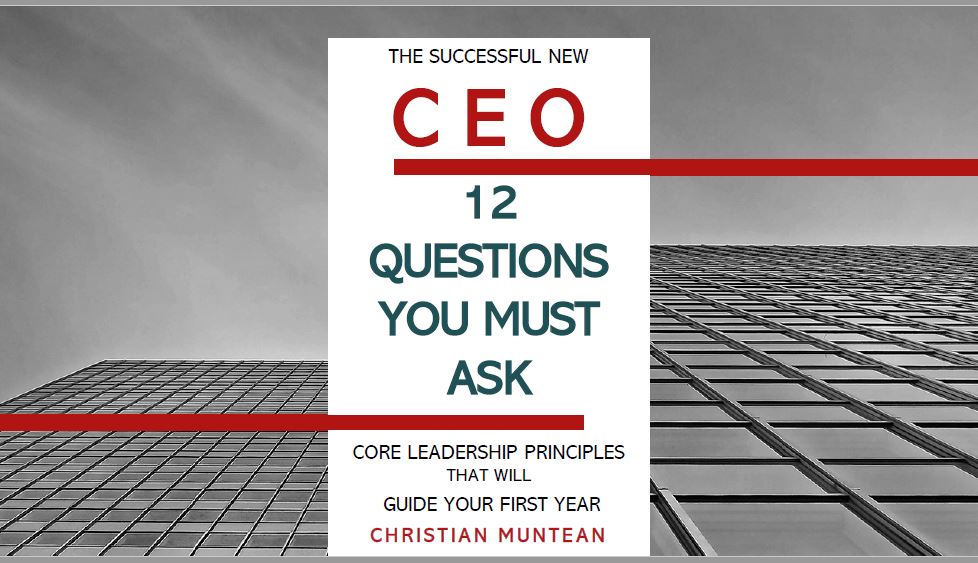The 4 Levels of Leadership – Where are you?

 Lorraine sat on her lanai in Maui, listening to the morning surf. The aroma of freshly brewed coffee blended with the scent of gardenia in the air. Surprising herself, she let out a deep sigh.
Lorraine sat on her lanai in Maui, listening to the morning surf. The aroma of freshly brewed coffee blended with the scent of gardenia in the air. Surprising herself, she let out a deep sigh.
Lorraine felt stuck. She had led her business successfully for years. But she never felt free from it. She had hoped to spend a month in Hawaii this year. But one of her managers was tested for COVID and had to quarantine. So Lorraine was forced to cut her vacation in half. Now that she was finally there, her phone won’t stop buzzing. It’s as if her entire team just forgot how to do their jobs. In fact, she had just gotten off an early call to deal with a staffing issue.
On the other hand, there was good news too. A potential client was interested in a large project. This particular project was right up her company’s alley. Unfortunately, Lorraine didn’t have anyone who she trusted to bid it for her, so she had to try to get that done today. She’d have to miss out on morning snorkeling that she had hoped for. But if she landed this project, costs would be covered for the rest of the year.
Trapped. At least she had a beautiful view.
Why Freedom is Elusive
Many owners and leaders feel trapped. For most, they love their work. They enjoy the game of business. They like solving problems and the sense of accomplishment. Many are experts in their areas. Like artists, they can lose themselves in their efforts.
But they also feel trapped. Many accept this. For a time. While they’d like the freedom, they also like the sense of being needed, of being valuable. If no one texted or called – what would that mean?
Others are afraid that if they aren’t “on”, everything will fall apart. After all, no one else really cares as much as they do. No one else can really be trusted to follow through for the client.
What they don’t recognize is that they are building their own cages.
What is The Cage?
The cage is the issue of management. The more a leader needs to manage, the less freedom they will ever have. And the more closely a leader must manage, the smaller the dynamic they can manage. For the sake of clarity, I’ll differentiate management from leadership. Good management produces consistent and reliable outcomes. It can be provided by individuals and systems. The more systems are used to contribute to consistent and reliable outcomes, the more freedom there is.
Good leadership is responsible for determining the overall direction and the desired outcomes. It can only be provided by people. Leadership is always needed. But the better management is, the easier it is to lead.
They are not a dichotomy. Ideally, they are a synergy – Solid management structures overseen by a solid management team allow freedom for leadership. It doesn’t matter if leadership is provided by the same management team, or if it is provided by people whose only role is leadership. Management maintains quality and consistency. Leadership drives improvements and growth.
Organizations with strong leaders who don’t build strong management structures and teams – find that most of their vision never grows beyond dreams. Success cannot be sustained.
Organizations with strong management that don’t build or release individuals into leadership – find that they don’t have vision or direction. They usually wander and morale decreases. This ultimately drags down productivity and success.
Leaders Need to Grow and Change or Their Organizations Won’t
It begins with leadership. Someone must provide it. It doesn’t have to just be one person – but there does need to be a clear, unified leadership voice. But not all leadership is the same.
People in leadership positions tend to shake out into one of four levels. None are necessarily wrong or “less than”. But they have different management:leadership ratios. The lower levels of leadership have a much higher percentage of management to leadership. The higher levels reverse that ratio. Moving to the next level expands your ability to drive growth (and experience freedom).
The Four Levels
(For the purposes of illustration, I’ll suggest the typical management:leadership ratio found at each level)
Level I (90:10) – Leader as Master Doer: Master Doer leaders are usually highly skilled and effective. Their teams usually exist to help maximize the Master Doer’s ability to do. Think of a chef-owner surrounded by their cooking and house staff. The chef is the Master Doer. The team, who, even if highly skilled in their own right, is there to ensure the chef’s success.
This dynamic applies just as much to the contractor who needs to do the work himself. Or the administrator who delegates tasks but not responsibilities. Many “mom and pop” type businesses are led by “Master Doers”. Which, incidentally, is one of the primary reasons why they often don’t survive a major upset or aren’t able to sell. Because mom and pop are the business. If they aren’t there – nothing happens.
A Master Doer facilitates their own success via the use of a team.
In nearly all cases, the work stops when the Master Doer stops. The illusion of freedom for a Master Doer usually comes from their ability to call their own shots and having built a financial situation where they can step away for a short while. But it’s a leash and they can get yanked back at any moment. To grow beyond being a Master Doer requires shifting your definition of success away from yourself to your team. You need to shift towards facilitating the success of your team.
Level II (70:30) – Leader as Manager: Manager Leaders usually don’t do the work themselves. But they need to be “eyes on” the work and their people. They provide regular direction, guidance, and correction. Their direction tends to be task-oriented – not big-picture or outcome-oriented.
Things tend to operate well when the Manager Leader is around. But if the Manager Leader is away for long – the team may struggle with consistency, knowing what needs to be done next, staff issues, or how to resolve customer issues. Most Manager Leaders thrive best at managing the day-to-day and the people directly in front of them. Some are able to oversee multiple teams and sometimes in multiple locations. But even then, they still tend to need frequent on-site contact for ongoing direction-setting and guidance. If they don’t have this, they struggle with “out of sight, out of mind” issues. Some teams or locations will feel neglected.
A Manager Leader does facilitate the success of the team or teams. But hasn’t yet fully leveraged the capacity of an organization. Freedom for a Manager Leader comes about when individual teams have their own management and sense of direction. It’s even stronger when those managers have built structures (such as policies or procedures) that guide staff decisions and behaviors in the absence of a Manager Leader.
To grow beyond being a Manager Leader requires shifting away from direct management to Strategic Management. This is a shift in focus away from directly managing team performance towards managing towards a goal using strategy priorities.
Level III (30:70) – Leader as Strategic Manager: A Strategic Manager typically is able to facilitate the success of multiple units or a larger organization without having to be hands-on or present. Instead, they clearly identify larger picture goals and the strategic priorities needed to achieve those. They focus more on aligning the efforts of various teams. However, they rarely work directly with the teams. All, or nearly all, of their focus is with team leaders.
A Strategic Manager is focused on facilitating the success of the organization. This leader does so by leveraging the strengths within the organization. The Strategic Manager builds a culture of consistency within and between teams. Freedom for a Strategic Manager comes from shifting away from active management. This is usually accomplished through the development of strong management structures and building a healthy management team with a compelling culture and clear direction.
Level IV (10:90) – Leader as Visionary Aligner: The Visionary Aligner is focused on the alignment between the value, the vision, the priorities, the behaviors, and the measurable outcomes of the organization.
Another way of saying this is, the Visionary Aligner clarifies and cares for the vision, cultivates the culture, shapes the strategy, builds the leaders, and oversees the progress of the organization as a whole. The greatest amount of freedom for any kind of leader is at this level. Whether this freedom is used for a vacation in Hawaii or to develop new initiatives (or both).
At this level, the Visionary Aligner is very focused on what is produced, not what is done. If you are in a small or midsized organization, each of these levels of leadership is needed within the organization. In my opinion, the leaders of small and midsized organizations often have to be much more effective at each level than what might be required of their larger corporate counterparts. The reason being is that larger organizations have already understood and built the management structures that allow for growth.
Make the Jump
If you want to grow your organization, you need to honestly assess what level of leadership you provide. Growth follows the level of leadership. Your organization isn’t likely to grow or be able to sustain growth unless you grow as well.
Take good care,
Christian
Further Reading
The Real Secret to Leadership Development
You Need to Know This One Secret to Effective Leadership
There are 𝟭𝟮 𝗰𝗿𝗶𝘁𝗶𝗰𝗮𝗹 𝗾𝘂𝗲𝘀𝘁𝗶𝗼𝗻𝘀 to ask before accepting a new CEO position. Do you know what they are? Instantly download my free e-book here.
Vision Building Sprints
If you or your team are wrestling with defining your vision and would like help, I’m offering the opportunity for a “Vision Sprint”. This is a dynamic calibrating exercise. We will tightly dial in on your vision for the year and the key steps you need to take to get there. I’m offering either individual sessions ($2500) or team sessions ($4000).
Contact me at christian@christianmuntean.com if interested in learning more or setting up a time.
The Successful New CEO – FREE BOOK OFFER
As an executive coach, I’ve found that the experiences for new executives (or experienced executives in new roles) tend to touch on familiar themes. No one’s situation is the same. But there are common principles that, when followed, do guide executives to success. I introduce those core principles in my new book, The Successful New CEO. I’d like to give you a free copy (just pay shipping)!
situation is the same. But there are common principles that, when followed, do guide executives to success. I introduce those core principles in my new book, The Successful New CEO. I’d like to give you a free copy (just pay shipping)!
The book is divided into four parts:
- Becoming an Executive: Leaders can only lead out of who they are. How do you become the kind of person who successfully and gracefully inhabits this role?
- Seven Essential Executive Skills: The skills that earned you this new role may not be the ones that you need in the role. What are the key leadership skills that become even more important at the executive level?
- Leading Your Leadership Team: More than likely, you’ll be leading other leaders. How do you lead a confident, effective leader? How do you build a team out of leaders?
- First Things: Where do you start? How do you quickly build credibility and engagement? What is too fast or too slow?
The goal of The Successful New CEO is to help you quickly gain the confidence of your team, successfully address the issues you will discover, score early wins, and set a course for a fruitful future.
If you’d like to see how this book will benefit you or someone you know, I’d like to make it available to you for free! Click Here.
Find the value of your company with my free assessment tool: The Value Builder System
The Value Builder System™ is a 13-minute online questionnaire that evaluates your business on the eight factors that contribute more to its attractiveness and value. These factors are scored on a scale of 1-100. Businesses that score over 80 are likely to command 70%-100% higher value than others.
THE LEADERSHIP COACH Podcast
In my podcast, THE LEADERSHIP COACH, we explore effective, high impact and enjoyable leadership. We talk about personal development and the attributes that all effective leaders possess. I interview other leadership experts who share their knowledge and tips to help you build the confidence to lead and learn the habits of good decision-making.
Opportunities
Free Resource: How To Accomplish More Without Doing More is a workbook I created to walk leaders through a process of helping you own your calendar, liberate your time, and still get more done. Download it for free!
Executive and Leadership Coaching: Do you feel overwhelmed? Are you not getting the results you expect from the effort you are putting in? Do you find yourself facing similar challenges time and time again? Would you like to change specific ways of relating or reacting? If you would like to experience predictable, measurable growth Contact me.
Profitable Exit Strategy Workshop: Are you a business owner or partner? Are you over 55? Are you starting to think about exiting your business or active management in the next 3-5 years?
- Are you curious about what your business might be worth?
- Would you like to discover the specific steps you need to take to increase its value and become highly attractive to a buyer?
- Are you planning on handing it over to family or employees and you want to ensure long-term success?
If so, contact me now
Article Categories
Popular articles

Download my free 10-page eBook:
How To Accomplish More Without Doing More:
Eight Proven Strategies To Change Your Life
Discover how to save eight hours during your workweek-even if you're too busy to even think about it. The resource every maxed out executive needs.

